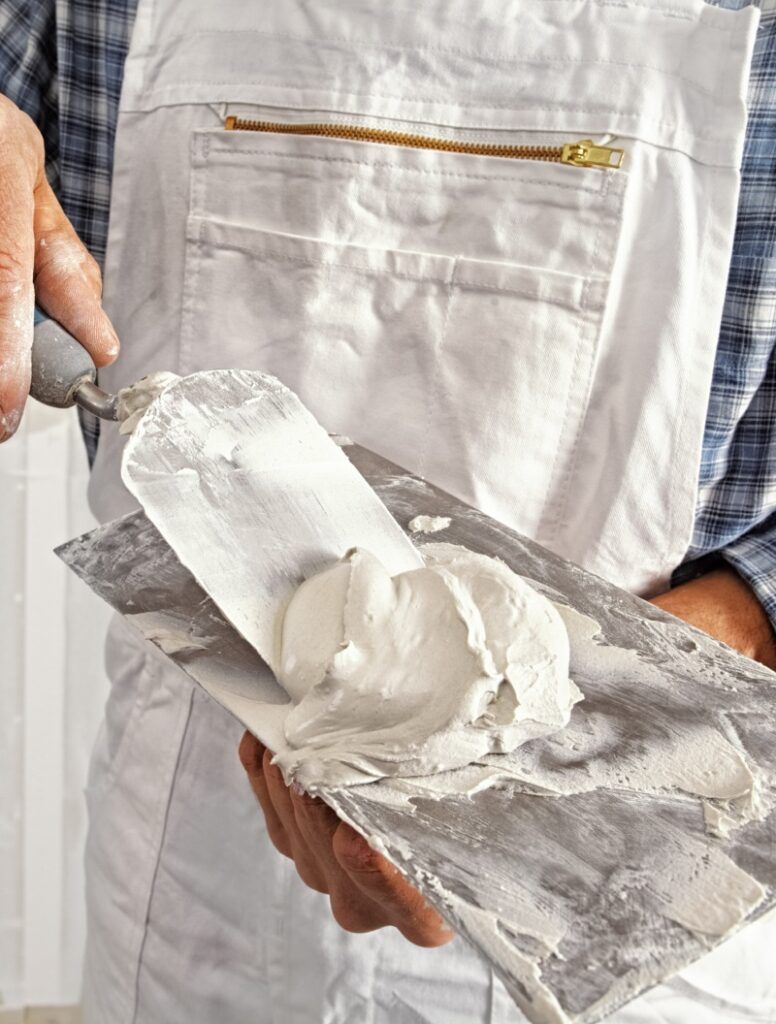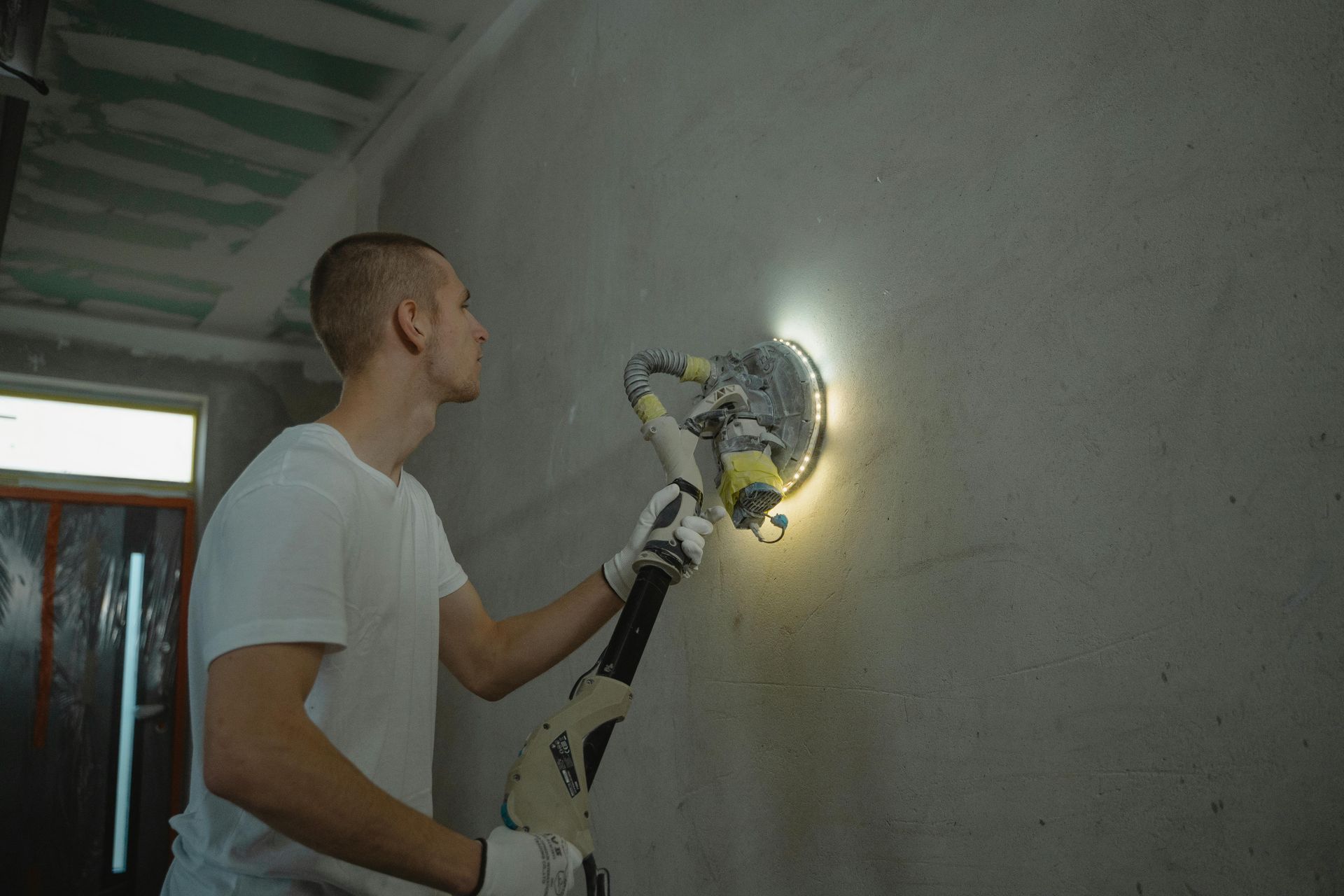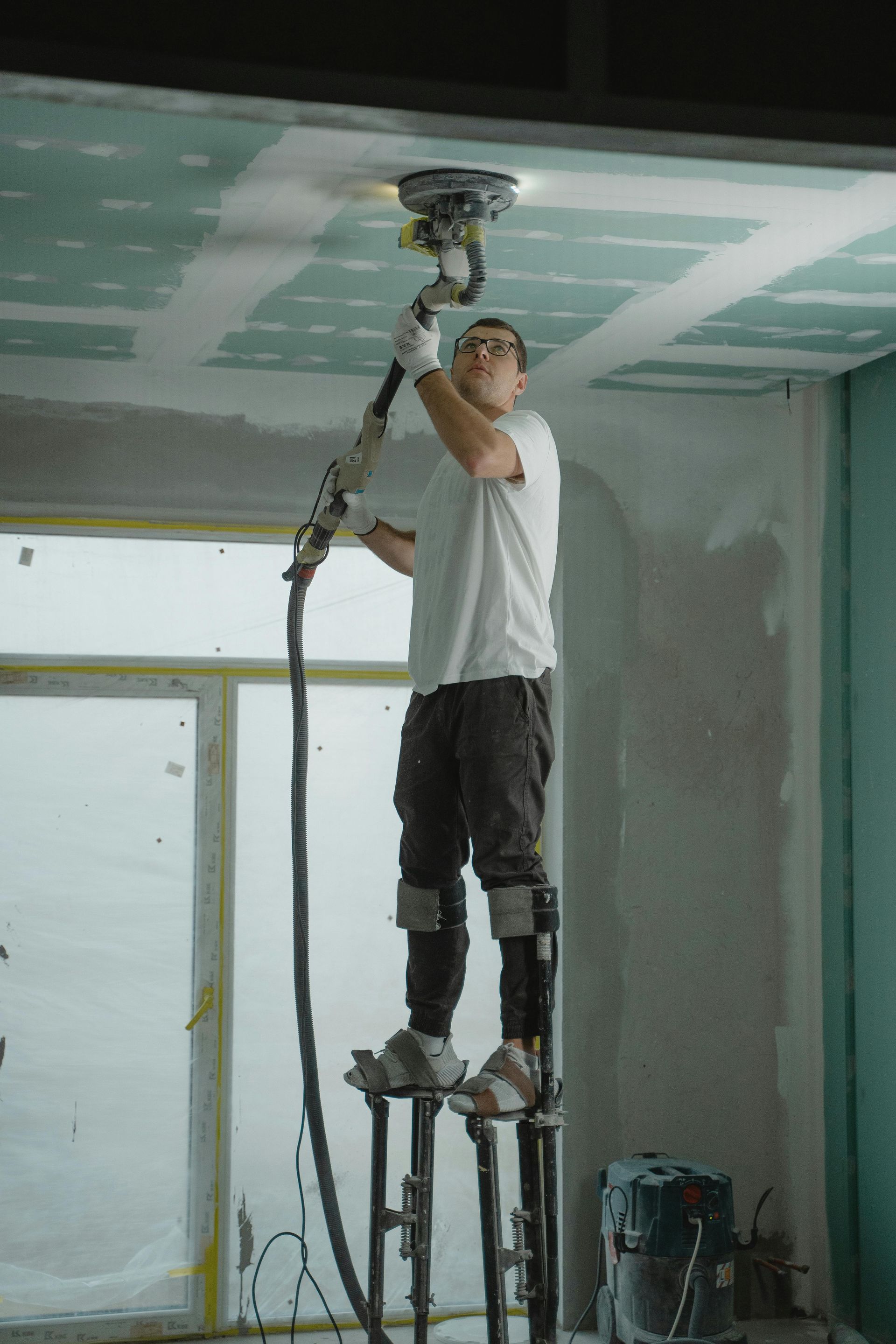
Signs You Need Skim Coating
Skim coating is a simple yet effective way to fix damaged or uneven walls and ceilings. If you’ve noticed cracks, pitting, or an overall rough surface, skim coating can smooth everything out and create a fresh, even finish. It’s the perfect solution when your walls are too damaged for just painting or patching. Whether you're dealing with old drywall, water stains, or wall imperfections, skim coating helps restore your space and prepares it for new paint, wallpaper, or other finishes.
If you’re unsure whether your walls need this treatment, keep reading. We’ll cover the common signs that it’s time to consider skim coating, so you can decide if it’s the right move for your home.
What is Skim Coating?
Skim coating is a technique used to create a smooth, even surface on walls and ceilings. It involves applying a thin layer of joint compound or plaster over the existing surface to fill in cracks, holes, and other imperfections. The process is fairly simple but requires a steady hand to ensure a flawless finish. Skim coating can be done on drywall, plaster, or even old painted surfaces, making it a versatile solution for various types of damage.
The Skim Coating Process
The process begins by cleaning and prepping the surface to remove dust and debris. Next, a thin layer of compound is applied, often in multiple coats, depending on the damage. Once dry, the surface is sanded down to create a smooth and even texture. This prepares the surface for painting, wallpapering, or other finishing options.
Skim coating not only improves the appearance of your walls but also helps preserve the integrity of your surfaces, making it a valuable investment in your home’s upkeep.
Top Signs You Need Skim Coating
If you’re dealing with uneven or damaged walls, it might be time to consider skim coating. Here are some of the most common signs that indicate you need this treatment to restore your walls and ceilings.
Uneven Walls or Ceilings
One of the most obvious signs that you need skim coating is when your walls or ceilings are uneven. This can happen due to settling of the house, poor installation, or age. Over time, drywall can shift or become misaligned, causing visible bumps and dips. Skim coating can help level the surface and create a smooth, even finish.
Visible Cracks and Pitting
Cracks and pitting in your walls or ceiling are another clear sign that it’s time for skim coating. These imperfections can be caused by several factors, including temperature changes, humidity, or the natural settling of your home. While some cracks can be patched, larger or more widespread damage often requires skim coating to cover the surface evenly.
Old, Worn Surfaces
If your walls are showing signs of wear, such as peeling paint, stains, or a general aged appearance, skim coating can give them a fresh look. Older walls or ceilings often have texture inconsistencies and rough patches, which can be smoothed out with a layer of compound. This is especially true for homes with plaster surfaces, which may have deteriorated over the years.
Poor Paint Finish or Peeling Paint
When your paint starts to peel or doesn’t adhere properly, it’s often a sign that the surface underneath is uneven or damaged. This can be the result of moisture, old paint layers, or surface imperfections. Skim coating provides a smooth base for paint, improving adhesion and helping your new paint job last longer.
Water Damage
Water damage can wreak havoc on your walls and ceilings, leaving stains, bubbles, and cracks behind. Skim coating is an effective way to repair surfaces affected by water damage, as it can fill in the gaps caused by swelling or cracking. This treatment restores the surface to its original condition, ready for repainting or finishing.
Benefits of Skim Coating
Skim coating offers several advantages for homeowners looking to improve the look and durability of their walls and ceilings. Here are five key benefits of this restoration process:
1. Aesthetic Improvement
One of the main reasons homeowners choose skim coating is to enhance the overall appearance of their interior spaces. A smooth, even surface not only looks better but also improves the finish of paint and wallpaper. Whether you’re preparing for a new design or just want a cleaner, more modern look, skim coating creates a flawless foundation for your decorative touches.
2. Increased Property Value
Investing in skim coating can boost your home’s value. Smoothing out imperfections and restoring your walls and ceilings can make your space look well-maintained and appealing to potential buyers. If you’re considering selling your home, this simple yet effective update could give you an edge in a competitive market.
3. Long-Term Cost Savings
Skim coating is a cost-effective solution in the long run. By fixing surface imperfections early, you prevent the need for more expensive repairs down the line. For example, addressing cracks or water damage promptly can help avoid structural issues that might require major work later on. Skim coating also extends the life of your paint, which means fewer touch-ups and maintenance over time.
4. Better Paint Adhesion
Uneven or rough surfaces can cause paint to peel or fail to adhere properly. Skim coating provides a smooth, uniform surface that allows paint to go on evenly and stick well. This results in a more professional-looking finish and helps your paint job last longer without cracking or peeling.
5. Ideal for Older Homes
Older homes often have walls or ceilings with significant imperfections due to age, wear, or previous repairs. Skim coating is an ideal solution for restoring the surfaces of these homes. It smooths out imperfections that have built up over time and helps modernize the interior without the need for a complete renovation.
How to Know If You Should DIY or Hire a Professional
When it comes to skim coating, deciding whether to do it yourself or hire a professional depends on the scope of the project and your skill level. Here’s how you can determine the best option for you:
When DIY Skim Coating Makes Sense
If you’re dealing with minor imperfections or small areas that need repair, DIY skim coating can be a manageable task. Homeowners who are handy with basic tools and have some experience with drywall or painting may find it straightforward to apply a thin layer of compound to smooth out small cracks, pitting, or bumps. For example, a small wall or ceiling with light damage can often be fixed by an experienced DIYer using the proper tools and materials.
When to Hire a Professional
If the damage is extensive, such as large cracks, deep holes, or significant water damage, it’s best to hire a professional. Skim coating requires precision, especially when dealing with larger areas or uneven surfaces. Professionals have the necessary skills, equipment, and experience to handle complex issues like drywall shifts or damage caused by moisture. They can also ensure a smoother, more uniform finish, which might be harder to achieve for an inexperienced person.
Hiring a professional can also save you time and effort. If you want a high-quality result without the risk of mistakes, a pro will get the job done faster and more efficiently, ensuring the job meets your expectations.
Skim Coating vs. Other Wall Repair Solutions
When it comes to repairing damaged walls, there are several options available, but skim coating often stands out as the best choice for certain issues. Here's how skim coating compares to other common wall repair solutions.
Skim Coating vs. Drywall Patching
Drywall patching involves filling small holes or cracks with joint compound or a patch, then sanding and painting over it. While this is a good option for minor damage, it doesn’t address larger surface issues like uneven walls or deep cracks. Skim coating, on the other hand, provides a uniform finish for the entire surface, making it ideal for walls that need more extensive smoothing.
Skim Coating vs. Plaster Repair
For homes with plaster walls, you may encounter issues like cracking, flaking, or rough surfaces over time. Traditional plaster repair can be labor-intensive and may not always restore the smoothness you want. Skim coating is a quicker and often more cost-effective solution that can be applied over plaster to restore the surface to a smooth, even texture.
Skim Coating vs. Re-Drywalling
Re-drywalling involves completely removing old drywall and replacing it with new sheets, which can be costly and time-consuming. Skim coating, however, is a less invasive and more affordable option that can provide similar aesthetic results without the hassle of a full replacement. If your drywall is still in decent shape, skim coating is a more practical and cost-effective choice.
How Much Does Skim Coating Cost?
The cost of skim coating can vary depending on several factors, including the size of the area being treated, the severity of the damage, and whether you choose to do it yourself or hire a professional. Here’s a breakdown to give you a better idea of what to expect:
DIY Skim Coating Costs
If you decide to take on skim coating yourself, the primary costs will come from purchasing the materials and tools. On average, you’ll need joint compound, a trowel or drywall knife, a sanding block or pole sander, and potentially a primer or paint for finishing. DIY skim coating for a small to medium-sized room may cost between $50 and $200, depending on the products you choose.
However, keep in mind that while DIY may seem affordable at first, it requires time, skill, and effort. Mistakes made during the process could lead to additional costs for materials or rework.
Professional Skim Coating Costs
Hiring a professional for skim coating will generally cost more due to labor and expertise. On average, professional skim coating services can range from $1 to $2 per square foot, which includes labor, materials, and finishing work. For example, the cost of skim coating a 500-square-foot room could range between $500 and $1,000.
While it may seem pricier upfront, hiring a pro ensures a smoother, more even finish and saves you the time and effort of doing the job yourself. If the damage to your walls is extensive or if you need a high-quality result, professional help is usually worth the investment.
Factors Affecting the Cost
Several factors can influence the cost of skim coating, including:
- Size of the area: Larger areas will naturally cost more.
- Extent of damage: More extensive damage or unevenness may require more coats or additional preparation.
- Location: Costs can vary depending on where you live and the availability of professional services.
Conclusion
Skim coating is a simple yet highly effective way to restore the look and feel of your walls and ceilings. Whether you’re dealing with cracks, uneven surfaces, or just looking to refresh an old room, skim coating can give your home a smooth, clean finish that makes a noticeable difference.
If you're ready to improve the appearance of your walls or ceilings, trust the experts at Patch Boys of South Central PA. Located in Hershey, we specialize in a wide range of drywall services, including skim coating, ceiling repair, patching, and drywall installation. Serving areas like Harrisburg, York, Lancaster, and beyond, our team provides quality craftsmanship and customer-focused solutions to meet all your drywall needs.
Contact us today to get started on your project—whether it’s a small repair or a full renovation, Patch Boys of South Central PA is here to help transform your space with precision and expertise.
FAQs
How long does skim coating take to dry?
The drying time for skim coating depends on the thickness of the application, the type of compound used, and the humidity and temperature in the room. Generally, each coat will need about 24 hours to dry. However, if multiple coats are applied, it could take several days for the full process to be completed. Make sure to allow adequate time for drying before sanding or painting.
Can I apply skim coating over wallpaper or textured walls?
Yes, you can skim coat over wallpaper or textured walls, but it’s important to properly prepare the surface first. If you’re dealing with wallpaper, it should be removed to ensure the skim coat adheres well. For textured walls, you'll need to clean and possibly sand the surface to help the compound bond properly.
Is skim coating permanent?
Skim coating provides a long-lasting solution for smoothing surfaces, but like any home improvement work, it can eventually need maintenance. Over time, surfaces may develop new cracks or imperfections, especially in areas with significant moisture or movement. However, with proper care, a well-done skim coat can last many years before needing attention.
Can I paint immediately after skim coating?
It's best to wait until the skim coating is fully dry and sanded smooth before painting. After the surface has been smoothed and cleaned, apply a primer before painting. This will help ensure a better paint finish and improve adhesion.
What should I do if my walls have large holes or deep damage?
If your walls have large holes or deep damage, it may require more than just a skim coat. In some cases, patching or replacing sections of drywall might be necessary before skim coating. A professional can assess the extent of the damage and recommend the best solution for your needs.










